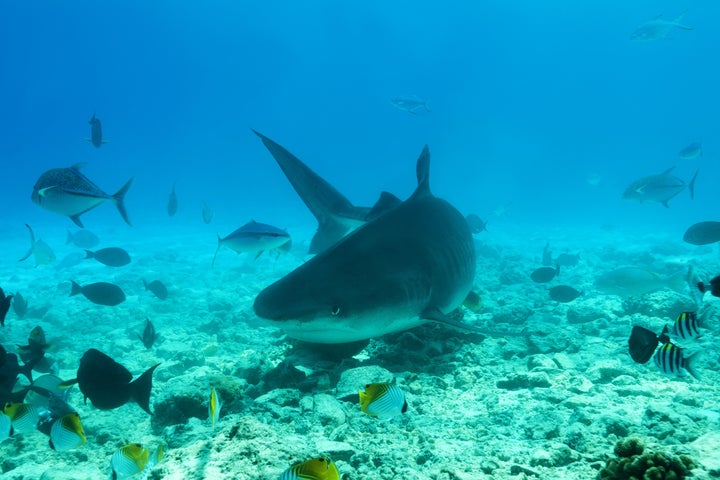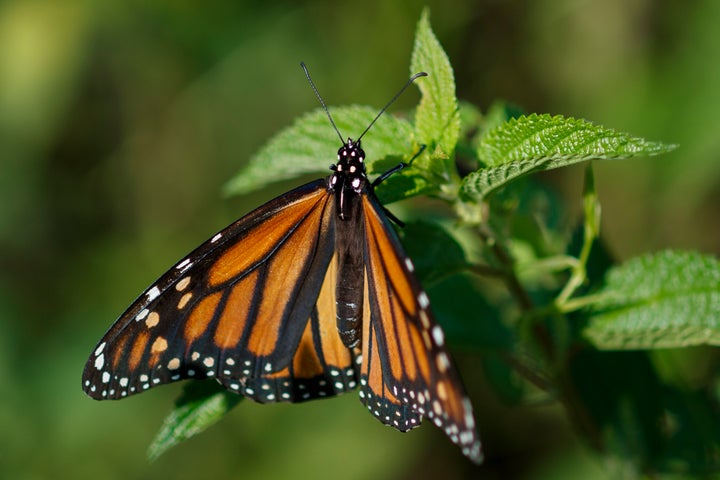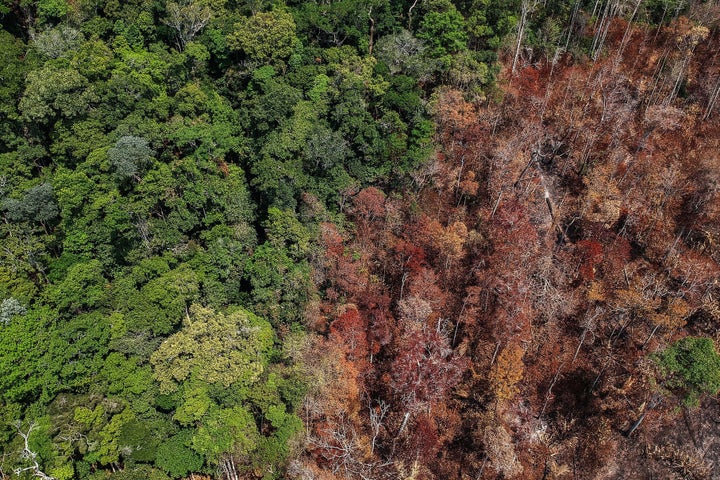This was the year the world was supposed to tackle the biodiversity crisis head-on. Countries were set to meet in Kunming, China, in October to agree on new goals to protect nature. But the coronavirus pandemic has halted progress on this massive challenge.
It’s a bitter irony, as COVID-19 has revealed more clearly than ever the serious implications of our ever-encroaching impact on nature.
“When we destroy and degrade biodiversity, we undermine the web of life and increase the risk of disease spillover from wildlife to people,” David Cooper, the deputy executive secretary for the United Nation’s Convention on Biological Diversity, told HuffPost.
Yet, instead of action, we often have inertia at an international level. This is despite the fact we are living through an extinction crisis. Scientists have warned that unless urgent action is taken, up to 1 million species of land and marine life could go extinct because of human actions.
This is why Mark Rounsevell, a professor of land use change at the Karlsruhe Institute of Technology in Germany, and his colleagues are calling for the creation of a new biodiversity target that is measurable and, importantly, simple. Their idea, proposed in June, is that countries should pledge to collectively limit extinctions across all fungi, plants, invertebrates and vertebrates to less than 20 species per year over the next century.
The hope is that a distinct target like this could capture people’s attention and bring home the importance of biodiversity at a time when it is under threat like never before.
‘We Don’t Have A Clear Target’
Species loss is currently so high that scientists believe we are in the midst of the sixth mass extinction ― an annihilation of wildlife. Rapidly falling insect numbers threaten humanity’s ability to survive. Scientists just declared sharks “functionally extinct” from 1 in 5 coral reefs. And last year saw the death of the only remaining Sumatran rhino in Malaysia, leaving fewer than 80 of these rhinos left in the world.
“If you lose species, you’re losing a unique component of life,” said Rounsevell. “Protecting species from extinction is a global responsibility.”
Yet efforts to protect biodiversity have so far fallen short. In 2010, 196 countries agreed to 20 global biodiversity goals set by the U.N., known as the Aichi Biodiversity Targets.
Each of the convention’s signatories was expected to meet all 20 targets by 2020. But most of these goals haven’t been achieved ― whether due to the vague, unmeasurable nature of a target (such as raising public awareness), the lack of accountability (nations didn’t need to report what they were doing) or the sheer scale of an ambitious but vague challenge: reversing biodiversity loss.
“The decline [in biodiversity] is not for want of trying,” said Rounsevell. People just haven’t figured out how to stop the loss.

Much of this unawareness is due to the fact that the biodiversity crisis has been poorly communicated to both the public and politicians, Rounsevell said. Although the loss of biodiversity is equally as disastrous as climate change and has significant effects on the economy, it is often forgotten in public policy conversations.
Rounsevell hopes that putting a clear number on the challenge that is easy to communicate to the public could be a way to break through this stasis. “Climate change discussions have the 2-degree target, but we don’t have a clear target in biodiversity,” he said.
Focusing on fewer than 20 extinctions per year would be effective, Rounsevell argued, because “nothing really speaks to people like extinctions. It communicates the death of nature.”
The number 20 is based on a 2015 estimate by scientists of the number of extinctions the world can handle per year without destabilizing ecosystems: 10 extinctions out of every million species per year. Crossing this tipping point, or planetary threshold, could trigger irreversible change.
Scientific estimates of how many species exist on our planet vary widely, from roughly 2 million to 2 billion. Rounsevell and his colleagues used the more conservative 2 million figure — a number based on the Catalogue of Life, an authoritative global database of all identified, scientifically accepted species — and applied that to get 20 extinctions per year.
Rounsevell’s goal is to make sure we don’t go past our planetary threshold and, ideally, that humans reduce our impact even further.
But conservation can take a long time. And extinction is incredibly difficult to measure, said Peter Stoett, co-chair of the IPBES global assessment on biodiversity. “There is a time lag generally between the last spotting of a member of a species and a declaration by the [International Union for Conservation of Nature] or any other relevant body that the species is extinct,” Stoett explained. “We would have a very hard time declaring with certainty how many extinctions are taking place each year, or even what year they took place.”
Rounsevell said his idea tries to take this into account. He is proposing a century-long deadline to achieve the goal of less than 20 extinctions per year, which will allow enough time not only to execute strong conservation projects, he said, but also for scientists to properly measure species loss and determine whether we’ve slowed things down.

It will be a tricky process. To be successful would mean unprecedented global coordination on everything from pollution and natural resource extraction to invasive alien species and climate change, said Rounsevell. On a national level, he noted that countries would choose their own concrete goals that outline how they will mitigate biodiversity loss. These goals will be monitored by a global tracker, similar to the Climate Action Tracker, which is run independently by two research organizations to measure governments’ efforts to reach the target of keeping global warming below 2 degrees Celsius.
Countries would need to look outside their borders, too, rethinking how trade operates, for example. And wealthy nations would need to agree to provide aid to help poorer countries that have high levels of biodiversity loss tackle the issue.
“It doesn’t matter if you’re only doing great in your country ― this is a global call,” Rounsevell said.
In order to check whether these conservation efforts are working, countries would use the International Union for Conservation of Nature’s Red List and track the number of endangered species as a proxy for extinction. If the number of endangered species decreases, the conservation actions will be marked as effective. If the number goes up, countries will need to reevaluate their efforts.
A Call To Arms Or An Oversimplification?
Some fear, though, that the target is too simplistic.
Our attention should be on ecosystems more broadly, Stoett said: “Personally, I lean more toward the assertion that we need policies that will target ecosystem conservation in wildlife habitat, as well as human-populated areas, thus including all the endangered and not endangered species within them. The focus on individual species is good, but clearly insufficient.”
This thinking aligns more closely with other recent conservation ideas, including the proposal to set an international target to protect all of Earth’s remaining wilderness. Experts have also suggested safeguarding 30% of the Earth by 2030, to help reduce extinction threats and carbon emissions.
Rounsevell agrees, in part, that we shouldn’t focus on species alone. “At the moment, we tend to be, as a society, more concerned with conserving charismatic species,” he said, including pandas and polar bears.
But by focusing conservation efforts on endangered species, he argued, the efforts will be more likely to protect biodiversity than big, broad schemes, such as creating more protected areas that don’t necessarily decrease the number of extinctions.

The target may seem like an oversimplification of the biodiversity crisis, Rounsevell acknowledged, but that’s not the intention. As with tackling climate change, the extinction goal “should be supported by a broader range of indicators and targets that more fully describe the state of biodiversity and its drivers of change,” his paper states. This includes taking into account local and cultural considerations surrounding the role and function of biodiversity for different communities.
Rounsevell hopes the target could serve as a rallying point for politicians to help concentrate their efforts.
But others are less certain. “Overall, I am not convinced that a branding exercise narrowing the problem of declining biodiversity to extinction ... is going to break the inertia,” Jessica Dempsey, a geography professor at the University of British Columbia and expert in global biodiversity politics, wrote by email.
Dempsey also disagrees that the extinction target fully incorporates the core issues of biodiversity loss. “Honestly, it seems like a naive theory of change, and worse, it could distract from other aspects of biodiversity loss that are not captured by extinctions.”
Rounsevell remains optimistic: “It’s going to work because politicians want and need a target,” he said. “If the science communities really start getting behind it, then politicians will listen.”
For now, the world will have to wait until next year to see what the future of biodiversity conservation holds. While Stoett doubts the 20 extinctions idea will gain traction among members of the Convention on Biological Diversity, who were set to decide on a new biodiversity target at the now postponed U.N. conference in China, he concedes that Rounsevell’s plan has added momentum to the fight: “The discussion the proposal has generated so far is welcomed.”
For Rounsevell, stimulating conversation is exactly the point: “This is a call to arms.”
For more content and to be part of the “This New World” community, follow our Facebook page.
HuffPost’s “This New World” series is funded by Partners for a New Economy and the Kendeda Fund. All content is editorially independent, with no influence or input from the foundations. If you have an idea or tip for the editorial series, send an email to thisnewworld@huffpost.com.